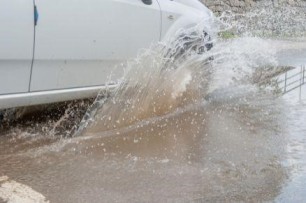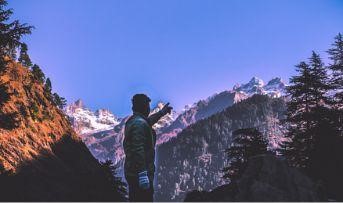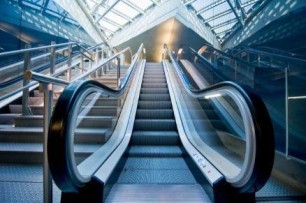General Insurance Blogs, Articles & Updates by - Magma HDI
Have us call you
- RENEW YOUR POLICY
- BUY NEW POLICY

Here are some strange facts about your body that you should know
The human body is the basis of all sustenance. All your organs are arranged in a highly complex manner and have been connected to derive energy from each other’s functionalities.
Every day, thousands of scientists across the globe conduct further research, trying to discover new things about the body which help us thrive even in the worst of circumstances.
You might have read about human anatomy in your school and college, but we bet there are many weird things about the human body that you might not know. Intrigued? Here are some strange facts about your body that you should know. Let’s get started.
1. Did you know that babies have 300 bones during birth instead of the usual 206 bones that develop over time as you grow older? A baby’s bones are delicate, and their bodies have bones half-made of cartilage.
2. The longest bone of your body, called Femur, is located in your upper leg and can manage almost thirty times your body weight.
3. The saliva your body makes every day, if collected for an average lifetime, can fill up to twenty thousand litres, roughly accounting for two giant swimming pools.
4. Almost twelve percent of people dream of monochrome (black and white). This had significantly reduced from fifteen percent before colour televisions and media took over. It is quite intriguing to observe how colour media has influenced the dream patterns of human beings apart from other impacts they have caused on our lifestyles.
5. You are more prone to heart attacks on Mondays due to the sudden stress you face as you get back to work. Your body gets a little relaxed over the weekend, and the pile of work at the beginning of the week creates sudden tension in your body. Plus, having excessive alcohol in your weekend plans makes your body vulnerable to heart attacks.
6. You are usually taller when you wake up in the mornings! This happens due to the compression of bones’ cartilages during the day. So, the body relaxes at night, and you are a little taller in the morning. An ode to gravitational force, it seems!
7. Ever wondered why permanent tattoos are so hard to remove? That’s because they are ingrained in your nerves and not on the top layer of your skin. Permanent tattoos take their space in your immune system, so lasers must be involved for their removal. Using lasers kills the cells, and the remaining ink released is processed by macrophages, which also helps heal the laser injuries. The tattoo takes a few sessions to start with the fading process.
8. See your hand. You see that little finger, or as you call it, your “pinkie” finger? Research has found that the maximum strength of your writing lies in your little finger, and you would lose fifty percent of the power if you lost that pinkie. Who would have thought?
We hope these facts amazed you and catered to your curiosity about your body. And while we are on the subject of strange facts, we must not forget that health is wealth, and if health is lost, nothing stays the same. You must take good care of your physical and mental health by eating right, staying safe, exercising, etc.
Also, you must stay prepared for unforeseeable circumstances you might find yourself or your loved ones. There can be no better investment than investing in your health. If you are in the best of your health, you can achieve all your aspirations and get the maximum returns. Health insurance is the right way to approach such situations. Explore your options and purchase the best health insurance policy in India which best suits your needs and provides comprehensive coverage.
Click HERE to know more about the benefits of the best health insurance policy in India.
Disclaimer: The information provided above is for illustrative purposes only. To get more details, please refer to policy wordings and prospectus before purchasing a policy.

Here are a few things you need to know while driving through a flooded road
Monsoon is here, and it is the much-needed respite from the scorching heat of the summer months. A hot cup of tea and a bowl full of crispy fried fritters are a great accompaniment to the pouring rain. But as refreshing as the monsoon rains are, the hindrance it causes to people's daily lives is inevitable and frustrating.
Rain brings many issues: power outages, poor internet speeds, flooded roads, and delayed meetings. We will look at the few ways you can tackle flooded roads and how to drive through the heavy downpour safely.
1. Do not stop:
If you are in a flooded area, waiting for the rain to pass might not help. Chances are, the rains will get heavier, and the roads will be filled with more water. Under these circumstances, it is best to keep moving steadily. Do not accelerate quickly or halt suddenly. Water entering the crevices inside the car's chassis can affect the car's functionality. If water gets to the engine through the exhaust, you might have to change the engine altogether, which can be quite expensive.
2. Brakes and pumping:
Once you are out of the water-logged area, it is best to pump the brakes to eliminate any residual water that might have collected. Water or humidity in the brakes can affect the efficiency of braking.
3. Maintain a safe distance:
Being neck to neck with vehicles can be extremely dangerous when navigating through flooded roads. The vehicle moving ahead causes ripples that raise the water levels around your car. This can lead to the water entering the exhaust or the air intake.
Also, navigating through water-logged roads is very difficult, and one might not be aware of any potholes or bumps on the road. Sudden bumps can push the vehicle back, damaging the front of your vehicle.
4. Figure out alternate routes:
Although it is best to stick to familiar roads, in case of floods and rains, you might consider taking an alternative route. Not all routes are flooded equally, as some roads might have better slopes and drainage systems. Even if it's a longer route, it will be better for you and your car.
5. Do not panic:
Being stuck inside a car and unable to move can be daunting and create panic. Focus on getting to a safe place. You might not be able to open the door because of the force created by the water around your car. Under such circumstances, use any tool to pry open the windows.
Look for any tools that are easily available under your seat or inside the dicky. Tools such as jacks, wheel wrenches, and spanners are readily available inside your car. Do not try to break the windshield as they are harder to break than windows.
These are a few things that you need to keep in mind while driving through flooded roads. Once you are out of the situation, it is best to take your car to a service centre and get it checked for any damage. Repairing these can be expensive, but you don't have to worry about the expenses if you are insured by the best car insurance in India. Possibly opt for travelling by public transport during monsoon. It may sound daunting, but it is a wise option to commute rather than getting stuck in the middle of the road due to the breakdown of your vehicle.
Click HERE to know more about the best car insurance in India.
Disclaimer: The information provided above is for illustrative purposes only. To get more details, please refer to policy wordings and prospectus before purchasing a policy.

Business owner's guide to make their shops and stores safe for customers
Owning a business is a challenge, but with the right mindset and efforts, you can make the most out of it. Whether a small store in a quaint locality or a well-known brand with multiple branches, it takes time, capital, and decision-making to scale a business and generate profits. Irrespective of the nature and size of the business, an essential feature is customer service for its growth.
Whether a service provider or goods dealer, most of the business' work relates to relations with outsiders. Whether directly or indirectly, most businesses benefit from strong connections with suppliers, dealers, and customers. Since these stakeholders frequently visit your business premises, it is necessary to make your store safe.
Purchasing public liability insurance in India is a practical investment to prevent your business from shouldering the burden of injuries and damages to third persons on your business premises. Coupled with our tips to make your shop safe, you can guarantee the safety of customers visiting your office or store.
1. Security supervision systems:
Installing an effective and advanced security system is key to securing a store. This includes CCTV cameras outside to capture the exterior for any suspicious movement and abnormalities. Inside the store, these cameras should be placed at junctions to give a complete view of the shop. This prevents burglary attempts and also helps identify mishaps at the earliest.
2. Automated door and window sensors:
Automatic sensors on or near entry points like doors and windows are necessary to prevent unnoticed entry into the store. Additionally, they also help limit access to risky areas within the store. For example, specific storage space or cold room should be out of bounds for non-employees. The easiest way to ensure this policy is by setting up systems that instantly alert the proprietor.
3. Practical stocking of goods:
If you run a store dealing in goods, displays are essential to your store layout. If stocked improperly, customers risk getting injured due to falling goods. You must settle these cases at the earliest. Ensure your employees are well-trained to prevent such situations.
4. Hazardous goods in the store:
Depending on the nature of the business, you may have to store some hazardous substances like chemicals, manufacturing, or electrical parts intended for sale but of risky nature. It is essential to place them at a height that is not accessible to children. For added security, take cautionary notice around such goods to alert customers of potential risks.
5. Maintaining hygiene:
Keep your stores safe for customers. This includes regular cleaning to prevent slipping, sanitisation to avoid infectious diseases, and to provide a safe experience for them. Wherever required, ensure that anti-slip mats are placed and that any wet aisles have precautionary notice boards nearby.
6. Parking and storefront safety:
Parking areas and storefront space are also included within the limits of your place of business. While the above mentioned methods can keep customers safe inside the store, these external areas should also be accounted for. Ensure that the parking space is well-lit with clear directions. Wherever possible, use tactile pavements instead of smooth pavements or slopes to prevent customers from slipping in unfavourable weather conditions.
While there are some tips you can follow as extra precautionary methods to make your store safe for customers, the first thing you must consider is purchasing public liability insurance in India. It covers damages and injuries caused to a third-party or third-party property on the insured's business premises. It eliminates the liability on a business to compensate for accidental mishaps, which may take up huge bills. Public liability insurance in India is a valuable option that limits a business' liability to outsiders when damages happen by accident.
Practice these tips and make your shops a convenient and safe place for customers to enjoy shopping while being at peace. The better you serve your customers, the best outcomes you will get from your business.
Click HERE to buy public liability insurance in India.
Disclaimer: The information provided above is for illustrative purposes only. To get more details, please refer to policy wordings and prospectus before purchasing a policy.

Here are a few effective ways to defog your car windows during monsoon
Monsoon is here, giving us the perfect opportunity to take ourselves out on a drive and snack at roadside eateries. But it also brings the many challenges of navigating through heavy rain, congested roads, and low visibility. Adding to that are the fogged windscreens making driving more challenging on the roads.
When a relatively warmer surface comes in contact with a cold surface, it gives rise to fog or mist. The cold surface of the windscreen forms tiny condensation particles and fogs up the surface obstructing the vision for both the driver and the co-passenger.
A foggy window should not be the reason to dampen your monsoon spirits, which is why, in this article, we will take a look at all tips and tricks that you can follow to ensure a fog-free windscreen for a better driving experience.
1. Invest in a good quality defogger:
As the name suggests, it is used to defog the car windscreen. A defogger uses the air conditioning to draw air from outside the vehicle and passes through a heater to produce hot air. This air can be directed to the area that requires demisting or defogging. Many cars facilitate the defogging targetted towards the front and back windshield.
2. Turn on the air conditioner:
The basic principle behind using an air conditioner is its function as a dehumidifier. An air conditioner helps with removing the moisture inside the car. Manage the temperature on the air conditioner in such a way that the temperature inside the car and outside the car is similar. The AC can then draw air from outside. After this, you can turn on the heater to effectively clear the fog.
3. Crack open the window:
Most modern cars are equipped with a defogger and an AC. If you drive an old car, or your AC and defogger are not working correctly, you might have to consider an alternative.
In these circumstances, your next best alternative is to crack open the window slightly to facilitate the free flow of air. Another way to ensure no fog on the windscreen is by switching on the wipers while keeping the windows open since the fogging happens mainly on the outer surface of the windshield.
4. Use silica balls:
The fogging inside your car happens because of water droplets and condensation from the humid air. Without humidity, there are almost no chances of fogging. Keeping silica balls handy and placing them on the dashboard is a cost-effective alternative to ensure no humidity. Silica balls absorb water from their surroundings, maintaining the interiors fresh and moisture-free.
These were a list of simple yet efficient tips to follow if you face foggy windows during the monsoon drives. Foggy windows can be dangerous and cause severe accidents due to lack of visibility. These simple tips are essential to have a safe driving experience. Another way to ensure their safety is by investing in online motor insurance. Online motor insurance acts as a safety net against expenses you might incur in post care for your vehicle. Enjoy the perks of buying online by getting better premiums, faster claims, and less processing time.
Click HERE to buy online motor insurance.
Disclaimer: The information provided above is for illustrative purposes only. To get more details, please refer to policy wordings and prospectus before purchasing a policy.

Best winter destinations in India to plan bike trips with friends
As winter marks its arrival in India, planning trips with your friends becomes exceedingly essential. India is a country with diverse landscapes, sceneries, and cultures. This makes it exciting for bike trips, and there can be no better season than winter to explore. Bike trips give travellers a chance to discover the unknown.
The lush green surroundings, mountain passes, or scenic landscapes are perfect for exploring via bike. These trips become fun and safe if you've good company and reliable bike insurance.
Can you imagine where to set off this winter? Here's a list of the best biking destinations in India during winter to get you started.
1. Guwahati to Tawang:
Renowned as one of the most beautiful biking tours in the northeast, the Guwahati to Tawang route is a thrill in itself. The route is stretched over 500 km and becomes all the more scenic during winter for biking. Tawang is famous for its Buddhist monasteries and distinctive culture. On the other hand, Guwahati is beautifully cuddled between the Shillong Plateau and the Brahmaputra River.
The surroundings are breathtaking, with mesmerising valley views. The lush green landscapes of Tawang form a beautiful yet intricate contrast with snow-covered mountains encompassing the biking route.
2. Mumbai to Goa:
Goa always tops the winter bucket list of travellers and adventure junkies to explore its vibrancy, especially during the famous Goa Carnival and Christmas. And there can be no better way to travel to Goa than a bike trip with friends. The route through the Western Ghats and the scenic roads of the Malvan region is a delight to experience.
The gentle wind softly kissing the cheeks and mesmerising views taking your breath away are some common experiences you will enjoy on your trip to Goa. The distance from Mumbai to Goa is nearly 590 km, and it may take around 12-14 hours to reach there. If you love nature and beaches, this biking trip in winter will touch your heart and soul.
3. Bengaluru to Kolli hills:
The panoramic hill station will take your breath away while moving from the Western to Eastern ghats. The road from Bengaluru to KolliMalai is both adventurous and heartwarming, with around 70 continuous hairpin bends and the serene sight of the Agaya Gangai waterfalls and historic temples on the way. The distance from Kolli hills to Bengaluru is roughly 287 km, and the journey is worth experiencing.
4. Jaipur to Jaisalmer:
A bike trip to Rajasthan during winter can be a good exploration. The weather is favourable for the bikers to drive continuously for hours without any fatigue. One such route to explore in Rajasthan is from Jaipur to Jaisalmer. From the heart of the Pink City to the charm of the Golden City, this bike ride offers various offbeat experiences that are one-of-a-kind.
The distance is roughly 558 km, and the time taken is around 11 hours. From surpassing beautiful local villages, expansive desert views, and long roads to discovering the colourful Rajasthani culture along the way, this bike journey should be on your wishlist for winter travel.
There are myriad options to consider if you want to take a biking trip during winter in India. These trips become all the more fun when you are in the company of your friends. With India's diverse landscapes, you will surely have the best time of your life.
You must take the journey only if you are an expert driver, as these roads can be tricky. Additionally, you should also have bike insurance so that you have it all covered even if things go wrong. Ensure that your bike is serviced thoroughly before setting off on your trip. The bike’s performance gets impacted, and the mechanical parts jam in extreme winter conditions. Regularly check your bike’s condition during your trip to ensure its smooth working. Also, invest in good quality safety gear and helmet to stay safe while touring rugged terrains. Lastly, enjoy every bit of the journey and conquer new milestones.
Click HERE to buy bike insurance before planning your next winter trip.
Disclaimer: The information provided above is for illustrative purposes only. To get more details, please refer to policy wordings and prospectus before purchasing a policy.

Follow these tips for a safe escalator ride
How often are we stuck behind people scared to use the escalators, or are we the ones scared of escalators? Getting on the escalator can be daunting the first few times, but once you get the hang of it, it is easy and a more convenient way to traverse different floors. If you are worried about escalator safety, this article is just for you.
We will talk about everything you need to take care of around an escalator to make it easier and safer for you. Before understanding the safety measures, let’s examine some key points concerning an escalator.
How does an escalator work?
A set of interlocking steps looped around a pair of gears is made to rotate so that each step oscillates between different building levels.
What are the different parts of an escalator?
Inlet guards: A protective guard made of rubber that fits on the handrail to avoid fingers or other parts from getting caught in the handrail opening.
Operating panel: Switches that operate the functionalities of an escalator located near the boarding and landing parts of the escalator.
Sprocket: The wheels installed at the lower and upper parts attached to the steps are known as sprockets.
Truss: The support system of the entire escalator is known as a truss.
Balustrade: The part of the escalator that goes beyond the steps, including the guards, panels, handrails, and the deck board, is known as the balustrade.
What are the common escalator hazards?
1. Contacting the moving parts:
It is imperative to ensure that all the mechanical parts are adequately covered and are inaccessible to people. Little children tend to touch or hold the moving parts, crush their fingers, or scrape the surface altogether. Remember to hold on to the railings lined with the rubber casing and leave the railing as soon as you reach the standing deck on the escalator.
Don’t use phones or being distracted while on the escalator to avoid accidents. If you are with kids, be mindful and tell them beforehand about the dangers of touching the different moving parts of the escalator. Before getting on to the escalator, check that your shoe strings are tied properly to avoid getting caught between the steps.
2. Collision:
Leave a gap of at least one step between yourself and others on the escalator. Sometimes, people can take longer to get on or off the escalator, raising the chances of a collision. Never place your shopping bags on the stairs ahead or behind you.
This can create confusion and lead to a crash. If you have a lot of bags, it is best to keep them on the same level as yours so you can easily remove the bags off the escalator before getting down.
3. Step carefully:
Before stepping onto the escalator, ensure it is moving in the same direction you want. Step carefully onto the moving band. One key rule to remember is to avoid standing in lines on the escalator. These lines separate into different steps as you move forward and might lead you to topple over to the back.
These are a few things that you need to keep in mind before boarding an escalator. If you are with kids or older adults, hold their hands so that they can keep their balance. If you see elderly people trying to get onto the escalator, offer a helping hand. Escalator accidents are familiar sights in crowded areas but being mindful of your surroundings will keep you safe.
All that said, these situations can be completely unpredictable, and it is best to safeguard yourself in these circumstances with the best personal accident insurance policy in India. Personal accident insurance is the safety net you deserve to help yourself and your loved ones cover the costs of any accidents.
Click HERE to buy the best personal accident insurance policy in India.
Disclaimer: The information provided above is for illustrative purposes only. To get more details, please refer to policy wordings and prospectus before purchasing a policy.

Here's what you should know about the insurance while scheduling a surgery
Health insurance in India covers the costs of hospitalisation, medicines, and doctor consultation fees that can arise from any illness, disease, or accident. It has become more of a necessity because of our eating habits, the lifestyle we lead, and the risks of accidents. Such insurance removes the sudden financial burden you may face due to an accident or the need for expensive surgery.
However, not all is good, even if we have insurance coverage. Here's what you should know about insurance while scheduling surgery.
1. Coverage and limit:
The cost of surgery depends on its type and complexity. While a knee-replacement surgery will cost us around 1.5-2 lakh rupees in India, a more complex surgery such as a bypass surgery can cost upwards of 5 lakh rupees. You should first consider the total insurance coverage you have, keeping in mind the type of surgery you plan to undergo.
Your insurance policy will only cover the policy amount insured. You will have to bear any additional cost incurred in the surgery over the limit prescribed by your policy. Hence, you should be financially ready and arrange the funds accordingly.
2. Waiting period:
Any insurer does not provide cover from the first day your policy starts. The insurance company prescribes a waiting period, after which they will start providing you with the coverage benefits. This waiting period is not specified by any government agency. It depends on the individual company and the illness.
For example, the waiting period for any surgery arising can range from 1-2 years. The waiting period can be as high as four years if you declare a serious pre-existing disease when purchasing the policy. The insurance company will not reimburse you for any surgery scheduled during the waiting period.
3. Surgery insurance plan:
Insurance companies nowadays provide specific "surgery insurance plans," too. You can buy such a plan in case you intend to schedule surgery in the near future. However, you should first check the list of surgeries that your policy will cover.
Next, make sure your sum insured is adequate to cover all the costs related to the surgery. This includes the cost of surgery, hospitalisation, medicines, doctor fees, etc. You should also confirm the waiting period and the exclusions under your policy and assure yourself that your surgery will be covered under it.
4. Cashless claim:
A cashless hospitalisation facility settles your hospital bill without having to pay any cash at the time of discharge. Insurance companies tie up with hospitals and directly settle your bill with the concerned hospital.
Whenever you plan to schedule surgery, make sure the hospital you choose is one of the network hospitals of the insurance company. You can enjoy a cashless treatment facility there. You will not have to worry about paying the hefty bills and getting them reimbursed by your insurance service provider later.
Health insurance in India is extremely helpful when planning a necessary and expensive surgery. It removes the stress of arranging immediate finance for the surgery when you are already reeling under the stress of getting it done.
You should always go for the best health insurance in India available in the market. Its terms and conditions regarding the coverage and payout must be clear. The insurance policy should act like your saviour in difficult times. It should not be an additional burden on you when filing the claim during surgery is delayed or difficult. Also, it should be economical to fade away your financial stress.
Click HERE to buy the best health insurance in India policy to keep you and your family safe from health adversities.
Disclaimer: The information provided above is for illustrative purposes only. To get more details, please refer to policy wordings and prospectus before purchasing a policy.

Are you a flashpacker? Follow these tips to make your flashpacking trips memorable
India is a diverse nation with many beautiful surroundings, sceneries, and landscapes. Due to this spellbinding canvas of experiences, it has a flourishing tourism industry to make every occasion come alive. People from far and wide visit India to witness its monuments, lakes, forts, palaces, mountains, valleys, and cultural bliss.
Many terms are going the rounds for Gen Zs and Millennials who have a zest for travelling in and around India. The words like backpacking and flashpacking are thrown around like confetti. But what exactly do they mean? More and more travellers are turning towards flashpacking with time. If you're also one of them, this article is for you.
Amidst all this, you must have personal accident insurance India to help you stay secure and safe when you travel to explore new destinations and discover rare experiences.
What is flashpacking?
Flashpacking is one of the most travel-related terms in fashion and making the news right now. You may be familiar with backpacking which deals with travelling to far and wide places on a budget. It is usually done solo to explore more areas of the country. Backpackers mostly stay at hostels and enjoy the local street food. Everything is done keeping a tight budget in mind.
On the other hand, flashpacking is described as backpacking on a better budget. It refers to solo or independent travellers with more money to spare on their travels. Unlike backpackers, this expenditure is spent on the best food chains and boutique hotels. They want to explore every nook and corner of the country with added luxury and comfort.
What are the pros of flashpacking in India?
There are a variety of advantages of flashpacking in India. Since you will not have a tight budget to adhere to, you can enjoy it to the fullest. Some of the widely known advantages are:
● You can stay at the best, most comfortable, and luxurious hotels that offer magnificent views. For instance, if you're in Udaipur, you can book a hotel overlooking Lake Pichola.
● You will get a peaceful sleep in your comfortable bed. You will not share a room or stay in the dormitory, which can disrupt your sleep and cause other distractions while you try to enjoy your solitude.
● Since you'll be exploring the best food joints in the place, you'll never sleep on an empty stomach. Further, the options are deemed to be delicious as there is no shortage of funds.
● You can also travel comfortably in cabs or motorbikes without having to hitchhike or wait for your next ride.
Tips to make flashpacking trips memorable:
There are many tips and tricks that you can consider while flashpacking as an independent tourist in India. These are:
● Make sure you research and plan before embarking on your flashpacking trip to India. You can consult a travel agent or company that has enough resources for the same.
● Book your flight or train tickets in advance to avoid problems later.
● Do not force too many places in a single day. With no budget limitation, you can prolong your trip as long as you want without any worries.
● Ensure that you have enough information about the entry time, fees, and mode of travel for a particular place you want to go to.
● Carry all the essentials like medications, sunscreen, masks, sanitiser, snacks, and so on.
● Book the best hotels with a view well in advance, so you do not have to worry about having a luxurious stay.
● Choose the best and most well-researched places to stay in the city.
You should consider many things before you plan a flashpacking trip in India. You should take all the necessary precautions and also have personal accident insurance India to cover the medical expenses in case of emergency. India welcomes several once-in-a-lifetime experiences and moments you can cherish by setting out on tours to the country's diverse retreats.
Click HERE to buy personal accident insurance India.
Disclaimer: The information provided above is for illustrative purposes only. To get more details, please refer to policy wordings and prospectus before purchasing a policy.


